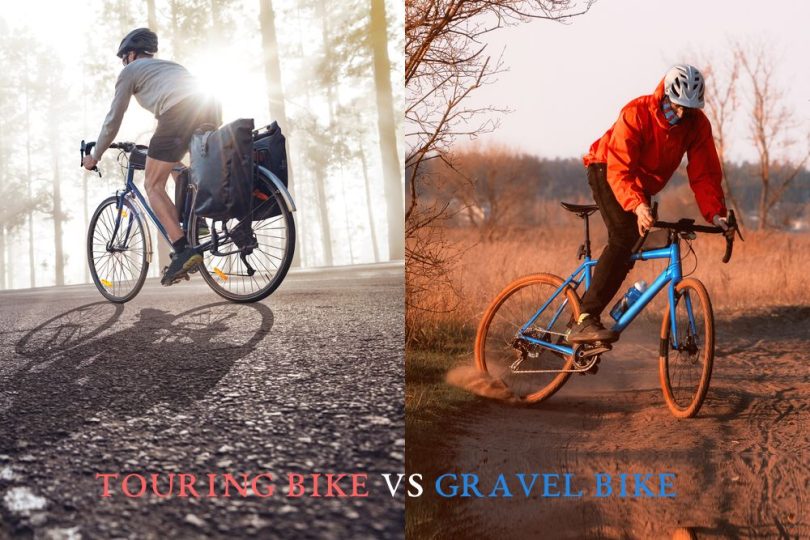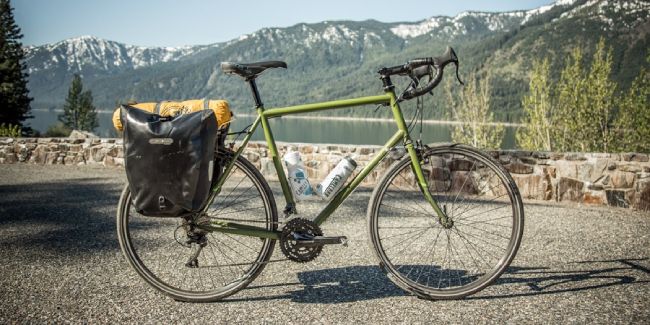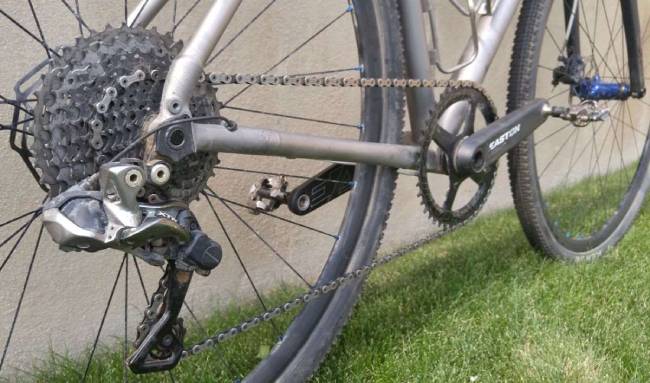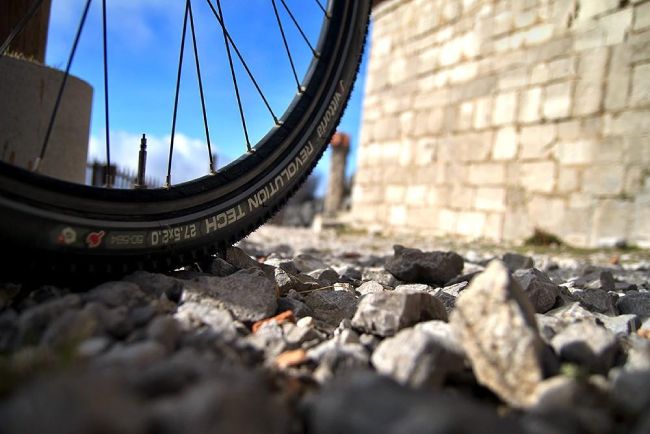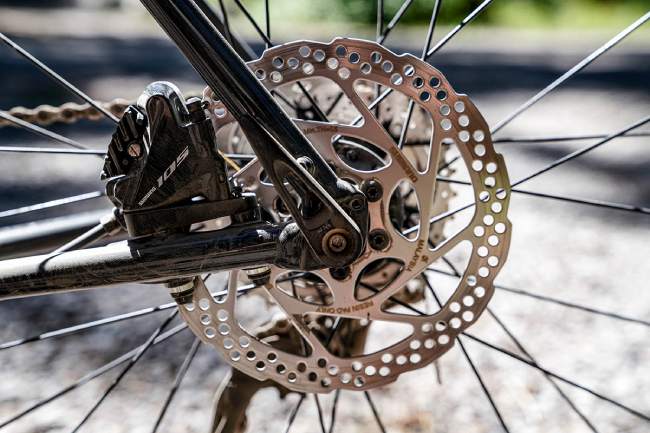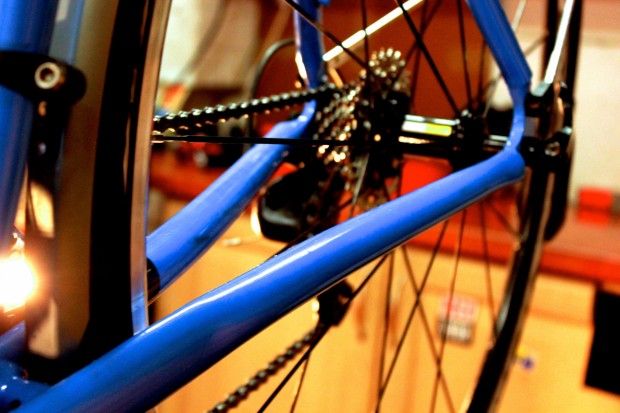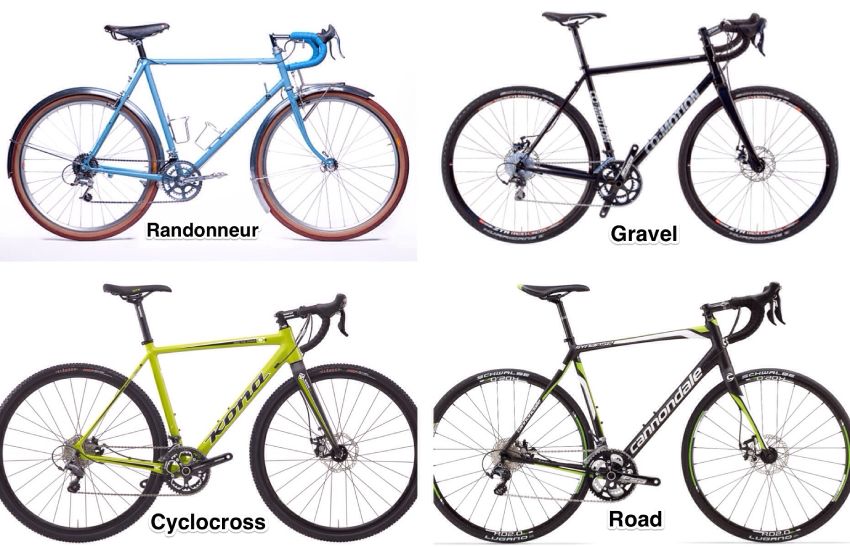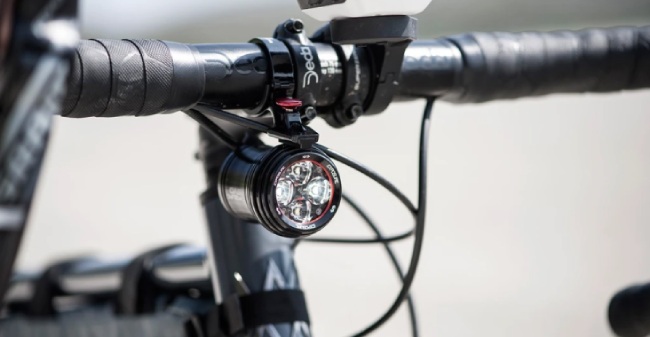Touring bikes and gravel bikes are made for two different purposes and obviously, they have many unique characteristics to help them do their job well.
Here we will weigh in the pros and cons of both types and see which type is best suited for what type of bikers.
What’s a Touring Bike?
Touring bikes are specially designed for touring. They can handle heavy loads due to their heavy-duty construction and top-quality materials.
They are great for travel enthusiasts who make bike tours whenever they get the opportunity.
What’s a Gravel Bike?
Gravel bikes are a trending subtype of hybrid bikes, specially designed for off-road riding.
Gravel bikes provide you with a smoother riding experience on a variety of loose, off-road terrains.
Touring Bike vs Gravel Bike: How They Differ
Take a quick look at key differences
| Comparing points | Touring bikes | Gravel bikes |
| Purpose | Touring | Off-road riding |
| Carrying capability | Can handle heavy loads | Can’t handle as much load as touring bikes |
| Construction | Heavy duty | Heavy duty |
| Gear support | Support for climbing slopes as well as flat/declined surfaces | Support for rough, steep, and sloppy terrains |
| Tires size | Ranges from 45mm – 60mm | Identical to touring bikes, with the exception of 37mm and 46mm tires |
| Tire width | Wider wheels | Wider and small wheels |
| Tire support | Greater traction on all roads and improved comfort, especially on rough terrains | Helps in maneuvering corners and steep climbs |
| Wheels sizes | Feature 700 cc wheels | Feature newer and smaller 650b wheels |
| Wheel support | Handle bumps a bit better | Accelerate quicker, provide better grip, and accommodate bigger tires |
| brakes | Disk brakes | Disk brakes |
| weight | Around 13-15 kg (28 – 33 lbs) | Around 9-11 kg (19-24 lbs) |
| Weight support | The heavier weight helps touring bikes get more grip on rough terrains | Less weight makes it easier to maneuver and faster than touring bikes. |
| Geometry | Longer wheelbase, slack frame angles, and three chainrings | Lower bottom brackets, slacker seats and head tubes, and longer chainstays |
| Chainstay length | Longer chainstay length of 430mm or more | Mid-length chainstay of around 420mm |
1. Gears
Touring bikes offer 2-3 chainrings, a chainset with 48/38/28 chainrings, and wide cassettes ranging between 11-36. They are perfect for climbing slopes as well as flat/declined surfaces.
On the contrary, Gravel bikes provide a wider range of gears for rough, steep, and sloppy terrains. That’s why it’s easier to spin up the big climbs without spinning out in times of descending or riding over flat surfaces.
2. Tires
Touring bike tires range between 45 and 60 mm. Wider tires feature greater traction on all roads and improve comfort, especially on rough terrains. Tubeless-ready wheels are becoming more popular on both touring bikes and gravel bikes.
Gravel bike tires are almost identical to the tires of a touring bike, with the exception of 37mm and 46mm tires. Wider tires with smaller wheels offer a bigger surface of contact, which helps in maneuvering corners and steep climbs.
3. Wheels
Most traditional touring bikes feature 700 cc wheels. Thesis wheels provide a smoother ride and carry more momentum off-road. They can also handle bumps a bit better so you can ride your bike on rough terrains comfortably.
On the other hand, the gravel bikes also feature newer and smaller 650b wheels. These smaller wheels accelerate quicker, provide better grip, and accommodate bigger tires.
4. Brakes
Both options come with disk-type brakes instead of rim brakes. The disk brake has more stopping power than the traditional rim brake. The use of disk brakes ensures that you can get exceptional output from your bike regardless of the bike type and condition.
5. Weight
Most touring bicycles weigh around 13-15 kg (28 – 33 lbs) which is a bit heavier than gravel bikes. The heavier weight helps touring bikes get more grip on rough terrains. This also makes some places harder to reach with touring bikes.
One of the most appealing aspects of gravel bikes is their lightweight design. On average, gravel bikes weigh around 9-11 kg or 19-24 lbs. The lighter weight profile helps gravel bikes to be easier to maneuver and faster than touring bikes.
6. Geometry
Bike geometry refers to the angles and lengths of its tube. It is one of the key factors that control the handleability and flexibility of your bike. Touring bikes offer a longer wheelbase, slack frame angles, and three chainrings to give you stability and durability.
Gravel bikes, on the other hand, are specifically made for long-distance cycling and focus on comfort and durability. They offer lower bottom brackets, slacker seats and head tubes, and longer chainstays.
7. Accessories
Touring bikes are optimized for daily/long-distance rides where you have to carry heavier luggage. They maximize their carrying capacity with saddlebags, rack-top bags, and bar bags. You can easily mount your preferred carrier on your touring bike.
Gravel bike’s open and simple frames offer fewer luggage mounting alternatives than touring bikes. You’ll have space for your essential equipment.
They also offer pannier rack mounting nodes for carrying some loads but aren’t good at carrying heavyweights.
8. Chainstay length
Usually, touring bikes come with a longer chainstay length of 430mm or more. This helps to make the wheelbase longer and provides more stability by distributing your weight evenly across the bike.
Gravel bikes offer a mid-length chainstay of around 420mm. The length is limited only by drivetrain and tire clearances. This will help you to get in a more comfortable, upright position while traveling long distances.
Touring Bike vs Gravel Bike: A Quick Look
Here are the key differences between touring and gravel bikes summarized in a chart:
| Subject | Travel bike | Gravel bike |
| Geometry | Focused on stability and endurance | Focused on comfort and endurance |
| Gears | 7 to 10-speed rear cassettes | 12 to 18 gears |
| Weight | 13-15 kg (28 – 33 lbs) | 9-11 kg (19-24 lbs) |
| Accessories | Mudguard, Racks, Bottle Holder | Pannier, Mudguard, racks |
| Tires | Rugged wheels with high spoke count | Tubeless or low-pressure tires |
| Saddle | Saddles with upright seating position | Saddles with controllable dropper seat post |
| Brakes | Mechanical disc brakes | Hydraulic disc brake |
| Mudguards | Mounting options available | Don’t have a mounting option for mudguards |
| Wheels | 700 cc | 650b/700 cc |
Benefits of Touring Bikes
1. Wide selection
Touring bikes are available in multiple variants such as road touring, sport-touring, mixed terrain touring, recumbent touring, expedition touring, and collapsible/folding touring.
You can choose whatever type you want, and also can modify your one later on-demand.
2. Load capacity
Usually, you’ll need to carry a multitude of luggage around while touring. Touring bikes are built to carry heavier loads and thus, provide better convenience on your trips.
3. Comfortability
They are comfortable to ride on almost every road condition due to their flexible and sturdy design. Unlike other road bikes, touring bikes offer an upright sitting position for more comfort.
4. Dynamo power
Most modern models come with a dynamo hub located in the front, which acts as a consistent power source to keep your GPS and lights always charged.
5. Mudguards
The bikes usually have mudguards or mounting options for them, which will protect you and your belongings from dirt and mud during wet days.
6. Stable
The geometry of touring bikes provides excellent support and stability due to their long wheelbase, frame angle, and chainstays.
Most trending bikes feature drop bars that allow you multiple hand positions. Some models also feature trekking and flat bars.
7. Reliable braking
The disc brake is the most suitable, and perfectly improves the braking power. It also increases the rim longevity by separating braking from the rim.
Drawbacks of touring bikes
1. Not good for backpacking
When it comes to backpacking, touring bikes are not so efficient since they can’t support higher climbing gears. These are also not a good choice for short trips.
2. Maneuverability
Unlike gravel bikes, touring bikes don’t provide great maneuverability and that can be challenging for many people, especially for novice riders.
3. Price
The price of touring bikes is higher due to their expensive parts. That also makes the repairing job costly.
Benefits of Gravel Bikes
1. 2-in-1 bike
One of the greatest advantages of gravel bikes is that they will allow you to fit larger tires alongside the regular ones. When you install larger tires, they will perform as a fat bike with more grip. You can change your bike’s appearance and performance whenever you see fit.
2. Go anywhere
Designed to be perfect for a variety of terrain. You can explore anywhere you want. They are easier to carry if you need them since they are lighter and compact in design.
They also perform well on rough ground, thanks to their capacity to handle rigid surfaces.
3. Simplicity
You will enjoy hassle-free and comfortable riding owing to the simple design and construction. The maintenance is also simpler and cost-effective. They are also great for backpacking.
Drawbacks of gravel bikes
1. Slower
The heavy-duty construction, quality materials, and wider tires make gravel bikes a bit slower compared to other types.
Why Should You Use a Touring Bike?
Having a touring bike can be beneficial since they provide a wide range of functionalities such as:
- Can use it throughout the year
- Perfect for long-distance traveling.
- They are stable, durable, practical, and reliable.
- Good for a variety of terrains.
- Can use it in wet conditions.
- Offers better handling at low speeds.
- Includes mount points for carrying luggage
Why Should You Use a Gravel Bike?
Gravel bikes are excellent for the below-mentioned reasons:
- Perfect for backpacking.
- One of the most versatile bike types.
- Offers great maneuverability.
- Provides a better upright riding position.
- Provide comfort and endurance.
- Can perform as a 2-in-1 bike.
FAQs
Q. Can a bike be designed for both backpacking and touring?
Yes, you can build a bike yourself that’ll be perfect for both touring and bike packing. With some modifications, you can even transform a touring bike into a bike-packing one and vice versa.
However, Building a bike yourself will cost you more than purchasing one.
Q. Are there any events for Gravel Bikes?
Gravel Bikes are commonly used in several biking competitions. “Gravel grinders” is one of the most popular events where you can use gravel bikes.
Q. What should I wear while biking?
You should wear safe outfits while riding a bike. To be more specific, you should wear a helmet, knee-pad, and safety gloves. And as for clothing, lighter dresses are preferable, but you are free to wear whatever you are most comfortable on.
Q. What are the accessories you should bring along while biking?
The GPS bike computer, light for nighttime riding, tire pumper, bottle cage, lock, safety/repair kit, etc is important for a safe and enjoyable bike trip.

